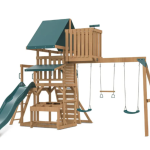Appraise Businesses More Accurately by Understanding the Main Factors Affecting Value

Appraise Businesses More Accurately by Understanding the Main Factors Affecting Value
ROI percentage ranges/ multiples for various business types and at various levels of profit are published in the Business Values Newsletter based on information from the marketplace. BUT, these ranges apply to typical/average risk profile businesses within each industry category. For an accurate assessment of ROI percentage/ Multiples to be used in a formal appraisal or valuation, a detailed risk profile of the business also needs to be worked through.
Risk Profile
When purchasers are weighing up which business to buy amongst a selection they may be considering, there is a large number of risk factors that they work through. Some of the main factors that apply to most small business types are summarised below.
Level of profit: the higher the profit the better.
Sustainability of profit: better if a level of profit has been sustained over a longer trading history.
Potential for growth: better to buy a business that has clear potential to increase revenue/profits (i.e. such as a retailer in a new/growing suburb).
Value of tangible assets: tangible assets are the stock, plant and equipment purchased as part of the business transaction. It is comforting for a purchaser to know that even if the business were to fail that the stock may still be sold off at cost value and plant and equipment at market value (i.e. if a business with no stock or plant and equipment were to fail (all value is goodwill) all of the value would be lost).
Availability of finance: strong recurring revenue businesses such as real estate rent rolls, supermarkets etc are favoured by the banks. Also businesses which include a large portion of value within modern plant and equipment. Banks will lend a higher loan to value ratio for these types of businesses. As such purchasers are more likely to be able to secure finance to buy these types of businesses.
Personal goodwill of the owner: essentially the less reliance on the current owner of the business involved in running the business, the better.
Management/business systems/processes: the easier it is for someone to step in and run a business the better. This will typically require good systems and documented processes to be in place. Business purchasers also typically prefer a lower number of staff to manage rather than having the difficulty associated with a large number of employees.
Quality/availability of financial records: financial statements, profit and loss, balance sheet information needs to be accurate and up to date. Internal accounting software should allow for good reporting. Availability of trading records for at least the last four years is also preferred. Essentially the availability of good record gives a business purchaser, their advisers and bank, greater confidence in making a purchasing decision.
Client profile: preferably recurring clients that are well spread such that no one client makes up a large percentage of revenue.
Supplier profile and product range: best if there is no particular reliance on a single supplier such that each supplier could be replaced if necessary. A broader range of products/services sold also spreads risk. There is also a preference if the business has its own branding of products that is well known in the marketplace.
Competition profile/barriers to entry: businesses which have limited competition in their industry niche are most sought after (i.e. those with a significant point of difference in products and services offered). Purchasers also prefer business types that have significant barriers to entry for new entrants. For example a single person trades business in say plumbing or electrical does not attract strong purchaser interest or goodwill value.
Premises/location/lease terms: the preference here is for well-presented premises and in a convenient location for customers. A reasonable rent and secure lease term is also important *it is also noted that businesses in smaller towns can sell at significantly lower values compared to those in the cities, given a smaller pool of purchasers in the marketplace.
Trading hours: preference here is for five days rather than seven days and normal working hours rather than late nights/early mornings.
Potential for disruption: for example through technology changes, government legislation or social/societal changes (i.e. aim not to be the video store owner!).
The above are only some of the main/common qualitative risk factors affecting ROI percentages/business value. Often where a business has an average/typical risk profile within its industry type, the Business Values Newsletter ROI Tables can be used to calculate a ballpark business value estimate. Even in this scenario, care must be taken to use the ROI Table for the appropriate business type and at the correct level of profit.
However, your author has seen examples of extreme risk profile cases such as:
- a single customer or supplier relied upon for more than 90% of revenue;
- large amount of working capital required; and
- sole trader businesses heavily reliant on owner’s technical skills and client relationships.
Transaction analysis for businesses sold with high risk factors such as the above, can in some instances see prices paid reflecting ROI percentages of twice or more (businesses worth half or less) than if based on the typical ROI range for the industry/profit level. A similar variance can apply for very low risk businesses.
Therefore, where any decision is to be made regarding a business that has significant financial impact, it is recommended that professional valuation advice be sought.
Use of Market Information
There are essentially two methods of using market information in determining an appropriate ROI range for a business valuation.
- Direct comparison approach.
- Bulk market evidence/use of a set of comparables for analysis approach.
Both of these approaches are used in the marketplace for small businesses and recognised as appropriate methods for valuation within the International Valuation Standards of 2022.
Direct Comparison Approach
This method involves directly comparing the business being valued to individual transactions (i.e. the subject business compared to other businesses that have recently been sold on all main factors such as level of revenue, profit, tangible assets, analysed ROI percentage achieved as well as the aforementioned risk profile factors).
This approach should only be used where the valuer has access to detailed sales evidence such that the required level of direct comparison can be made to each individual sale. It is also suggested that at least four to six individual sales transactions of similar businesses are available, so that any one sale that appears out of kilter with the main market range can be identified.
The ROI applied to the business being valued can then be derived from the most comparable evidence.
The direct comparison approach is often best suited to businesses that are commonly very comparable in risk profile (i.e. such as some franchise businesses).
Bulk Market Evidence / Set of Comparable Analysis Approach
This approach involves contacting business brokers, use of sales databases such as the Australian Institute of Business Brokers’ “Bizstats” to source a large number of transactions of similar businesses to the one being valued. The level of detail obtained on individual sales is often limited to main datapoints including:
- sale date;
- sale price;
- annual revenue;
- maintainable profit and standard of profit used; and
- value of stock, plant and equipment.
The Business Values Newsletter price charge reflect this approach. For example, wholesale businesses with one owner (PEBITDA) standard of profit of around $250,000 have a typical ROI range of 35% to 55%.
The broker or valuer must then use their experience in analysis of the subject business’ risk profile to determine the most appropriate ROI within the range analysed (i.e. moderately higher risk businesses would have an ROI percentage towards the high end of the range applied and moderately lower risk businesses an ROI towards the low end of the range).
As previously mentioned, in some cases, businesses with extreme risk profiles have an ROI significantly outside the typical ROI range for that business type.
For ballpark value estimates, use of typical ROI ranges from the Business Values Newsletter can be used. However, where accurate appraisal/ valuation is required in situations where there will be a financial impact, it is recommended that professional valuation advice be sought.
For market information and ROI ranges on a large number of business types, subscribe to Business Values Newsletter at www.jarot.com.au





